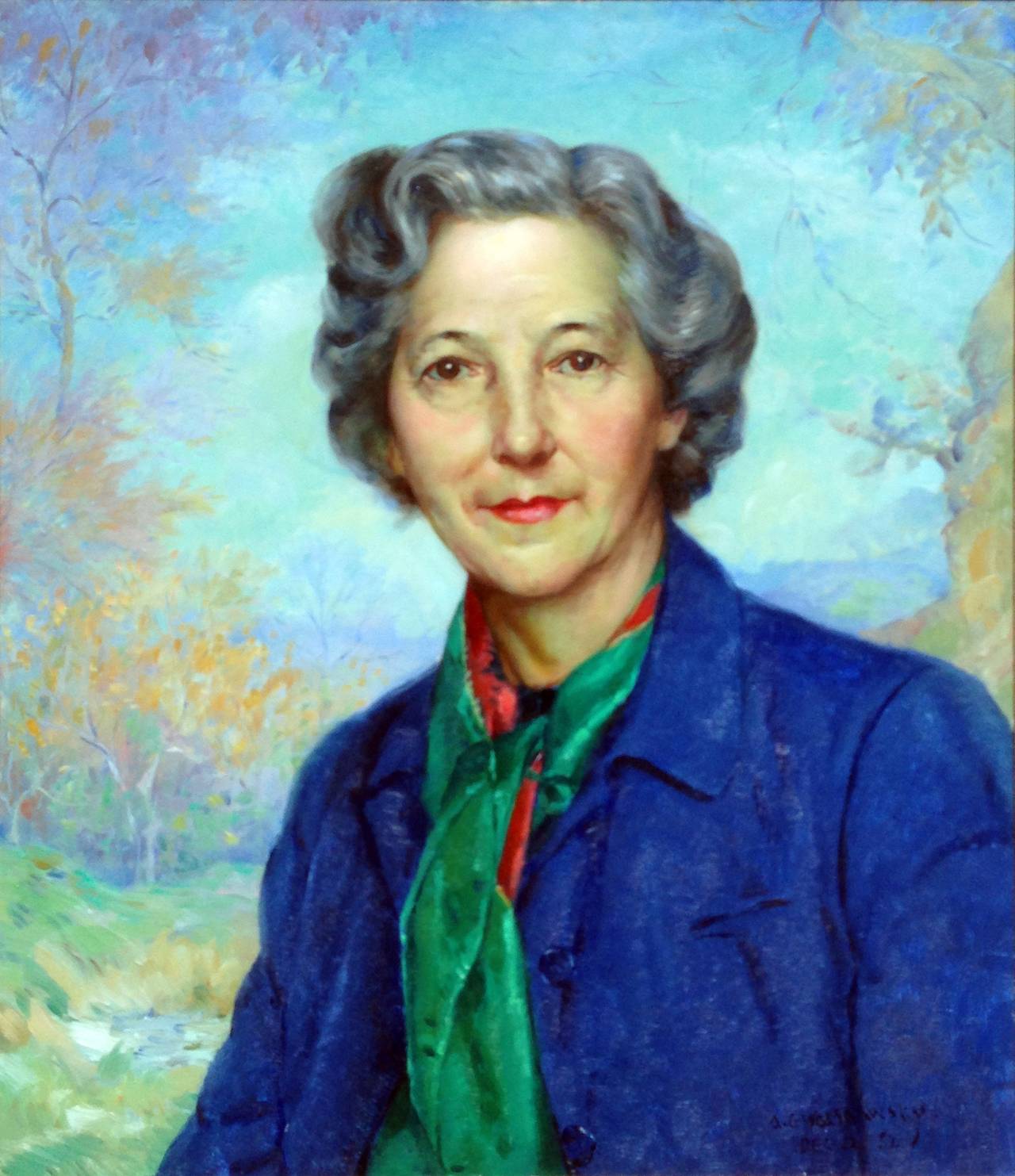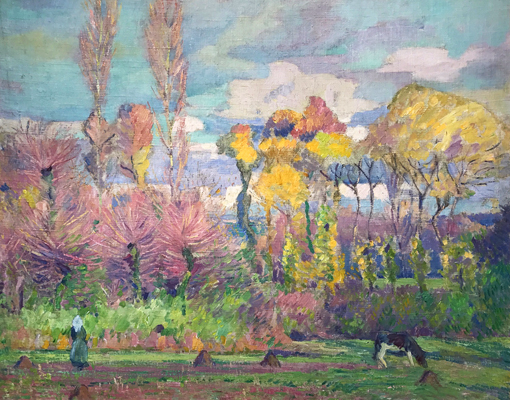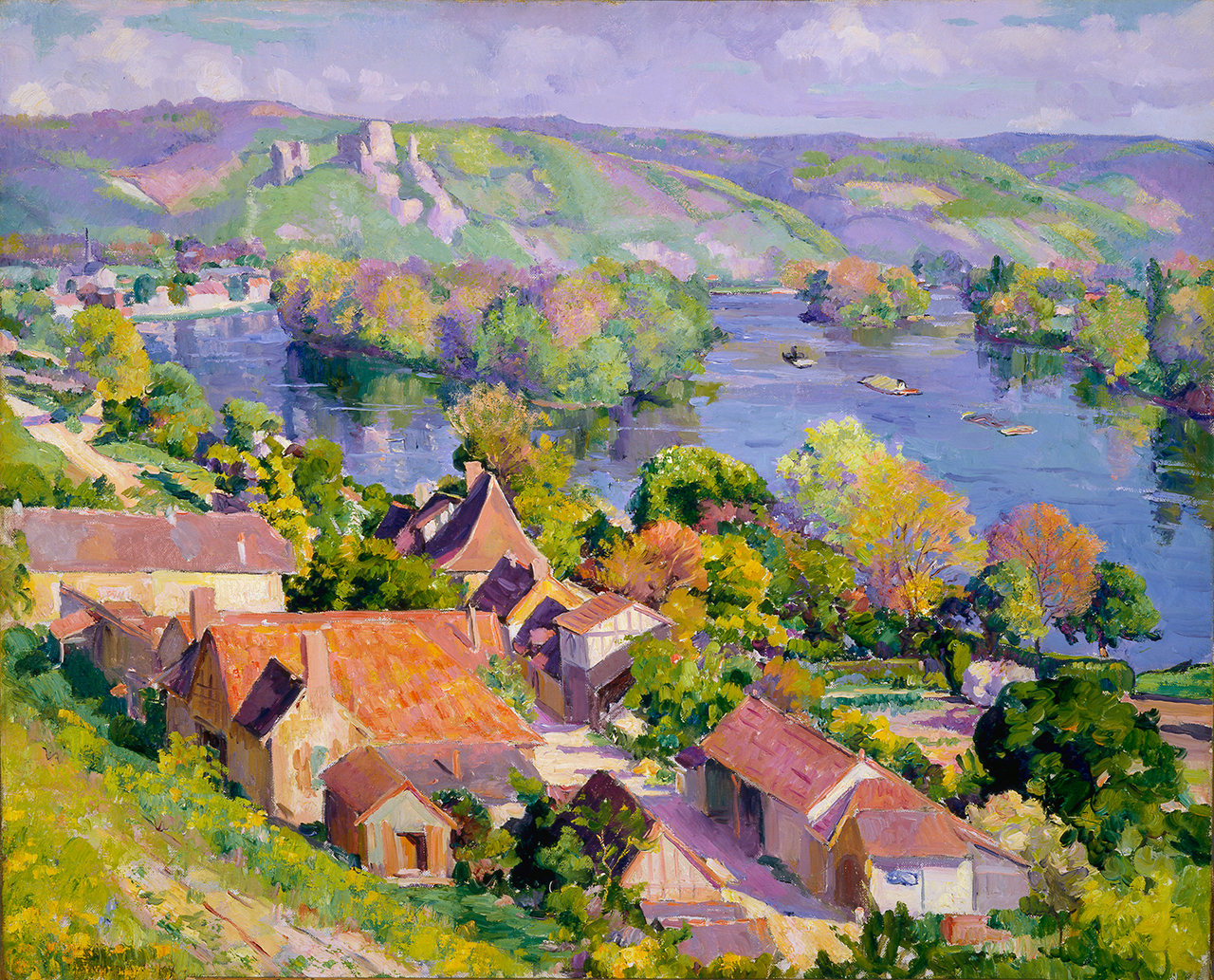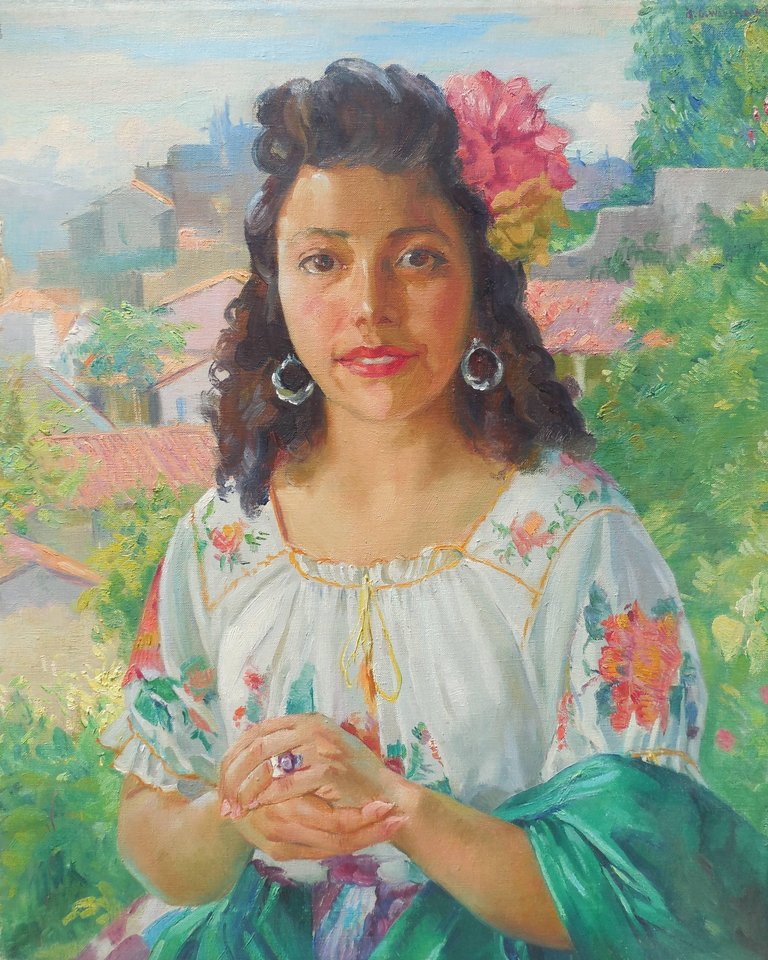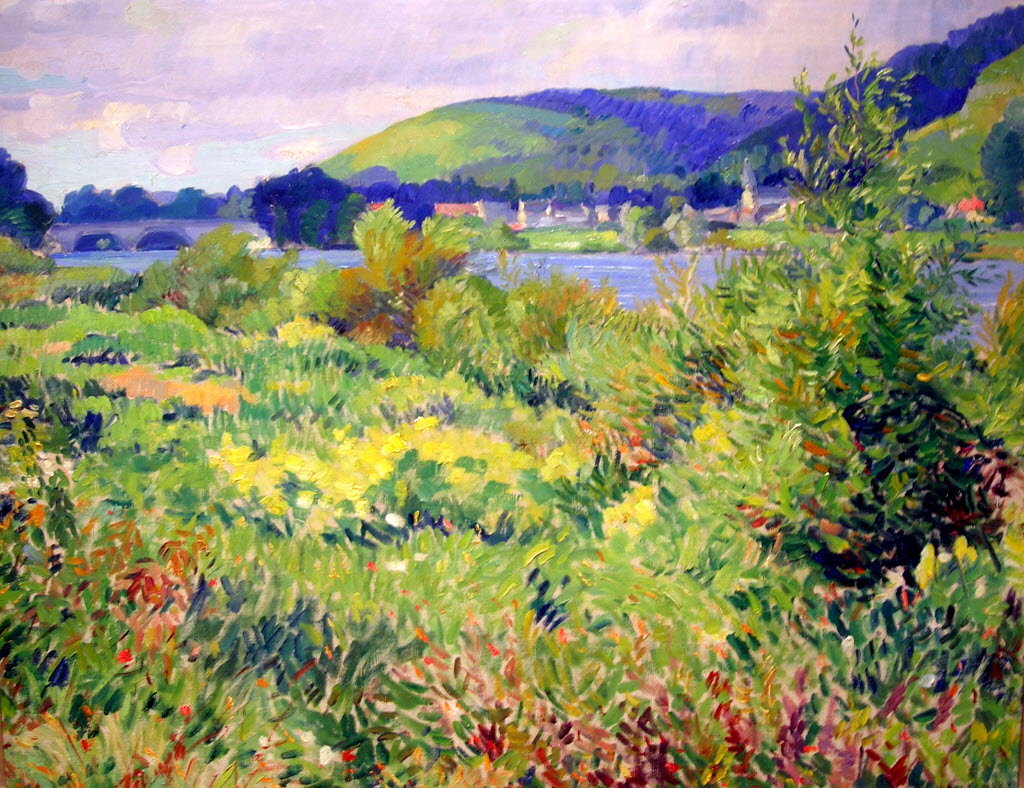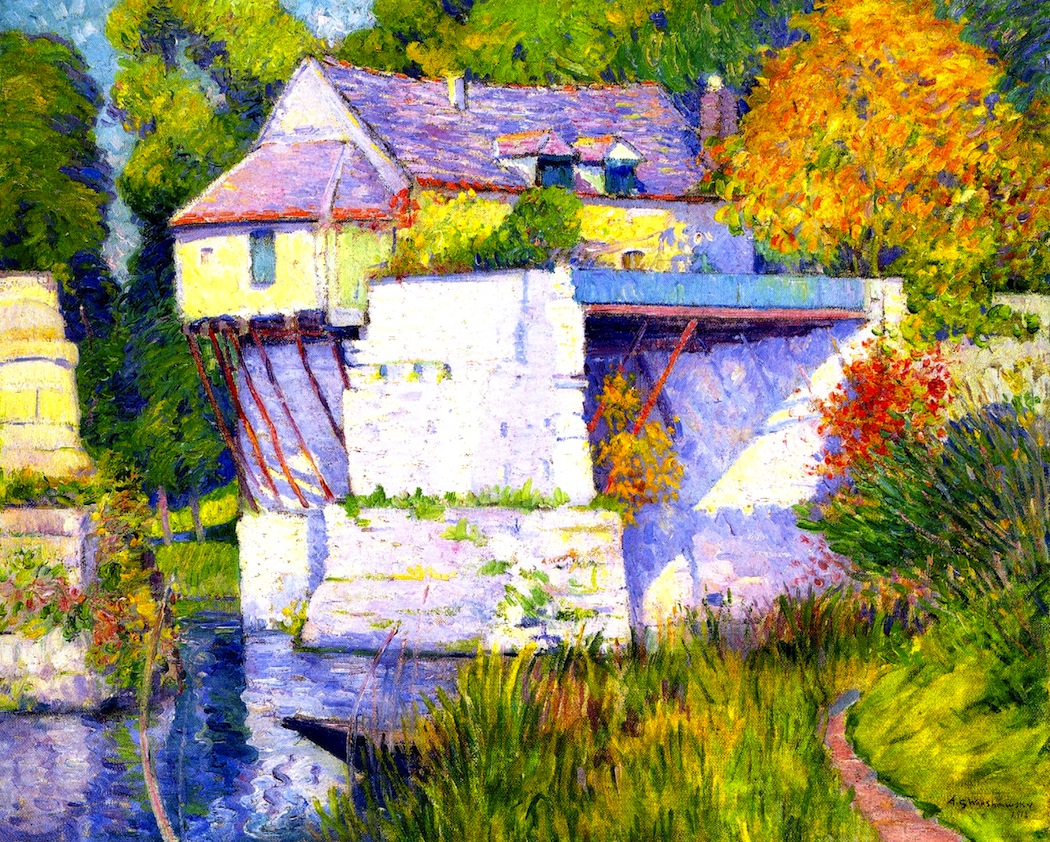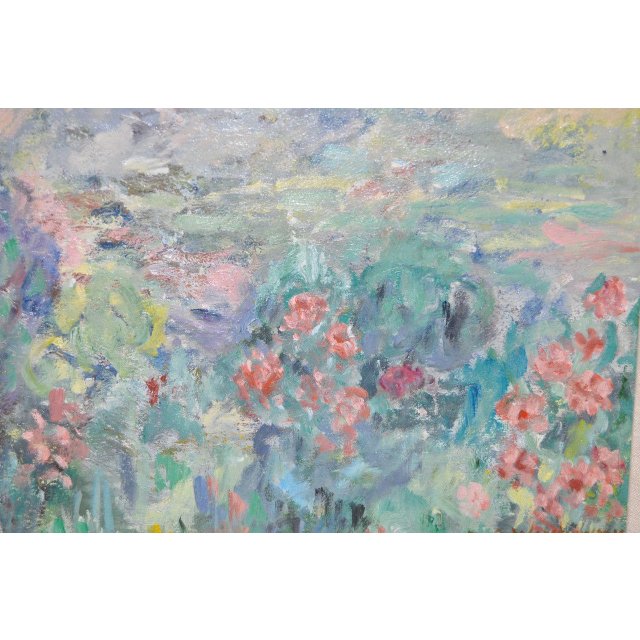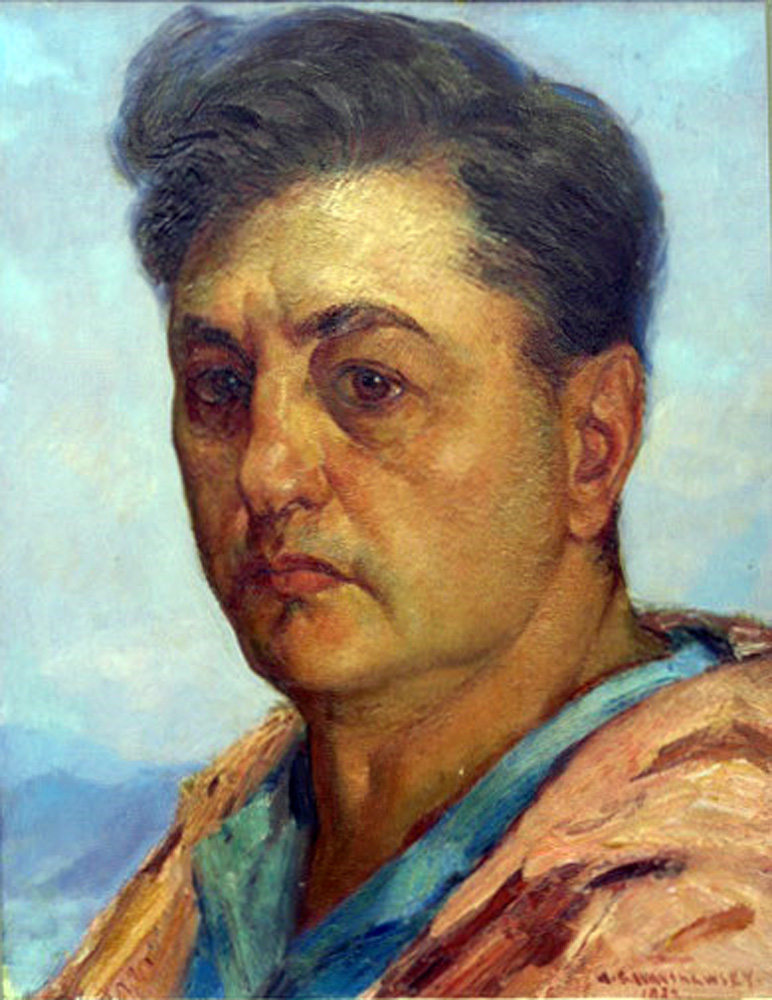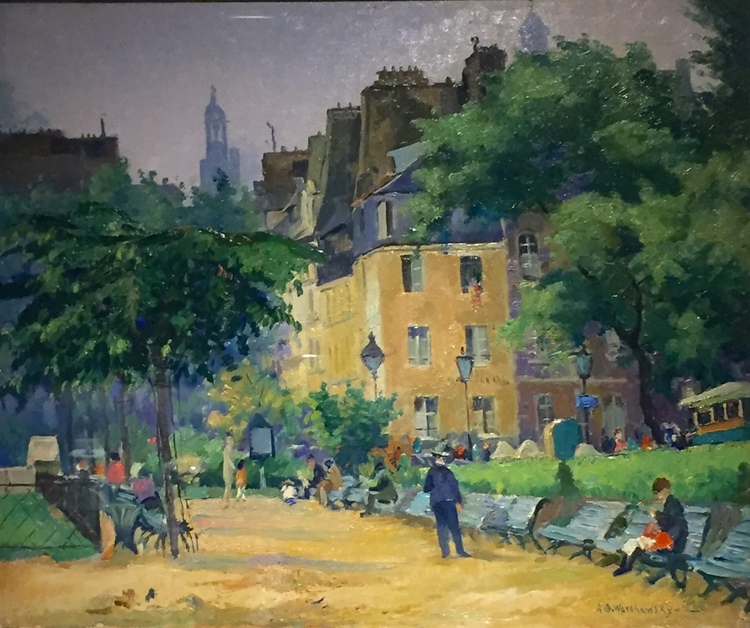Abel Warshawsky • american (1883-1962)
Brittany Peasants • Oil on Canvas 60” x 36”
Poor Jewish farmers are pushed out of their homes in rural northern Europe. Stop me if you’ve heard this one before … or seen it on the Broadway stage. Tevye and Golda had nothing on Ezekial and Ida Warshawsky. In 1872 they tumbled off the roof and ended up in Sharon, Pennsylvania. USA. There the seventh of their nine children was born. Now the story beyond “Fiddler” can be told.
Little Abel George Warshawsky was the American son who grew up to become a world-famous artist. But, first his path took him to turn-of-the-century Cleveland, a hotbed for modernist artists. There he studied at the Cleveland School of Art before earning a scholarship to the Art Students League in New York City, where he also studied at the National Academy of Design. After 8 years in New York, he reversed his parents journey and returned to Europe, although Paris in 1908 was a far cry from the worn out Polish soil his parents left behind. In France, Warshawsky became a celebrated Impressionist artist, although he also painted rich portraits in a unique realistic style. Brittany Peasants is an excellent example.
Warshawsky became well-known in Paris and his autobiography recalls meetings with Renoir, Winslow Homer, Modigliani, and William Zorach. His art was so treasured that he was eventually made a Chevalier of the Legion of Honor and a member of the French Society of Intellectuals.
(story continues below break)
INTERESTING STORIES FROM OUR SPONSORS

Life was good for almost 30 years. Warshawsky split his time between metropolitan Paris and scenic Brittany. In his autobiography, Memories of an American Impressionist, he talks of sunny days spent with his shirt off, painting the beauty of Brittany and its’ people. On one of those days he encountered the old couple now serenely gazing out from their perch on the walls of the Canton Museum of Art.
But, Warshawsky was still the Jewish son of Polish peasants, and as the Nazi shadow began to engulf Europe, his artistic fame offered little protection. Shortly after the death of his second wife, Minnie, Warshawsky followed the route his parents blazed 50 years earlier and headed for America. This time he was returning home rather than leaving it behind.
He settled in scenic Monterey, California with his third wife, Ruth. And there he lived until his heart gave out in 1962.
Perhaps that old fiddler brought Abel Warshawsky’s parents to America, where they raised a boy who became the greatest Cleveland artist to ever live and a celebrated creative force on two continents. “To a life well-lived we raise a glass, l’chaim. L’chaim means ‘to life’”.
Canton Museum of Art Permanent Collection • Gift of Sanford & Lynne Rivchun, 2012.2
4 Ways to Sound Smart When Viewing at The Canton Museum of Art
1.
“A Cleveland Plain Dealer Art Critic once called Warshawsky, ‘Perhaps the most phenomenally successful artist Cleveland has ever produced’. And if the Plain Dealer says it …”
2.
“Warshawsky is thought of as a classic Impressionist artist. But when he painted portraits he used the more realistic style seen in ‘Brittany Peasants’.”
3.
“Warshawsky’s brother Xander followed in his footsteps as a highly successful artist, while another brother, Samuel Jesse, was a well-known playwright and screenwriter.”
4.
“By all accounts, Abel Warshawsky was an exceptionally shy man. However, he was married 4 times, so perhaps wasn’t as shy as first thought.”
Warshawsky Timeline. Scroll over images to see timeline.
